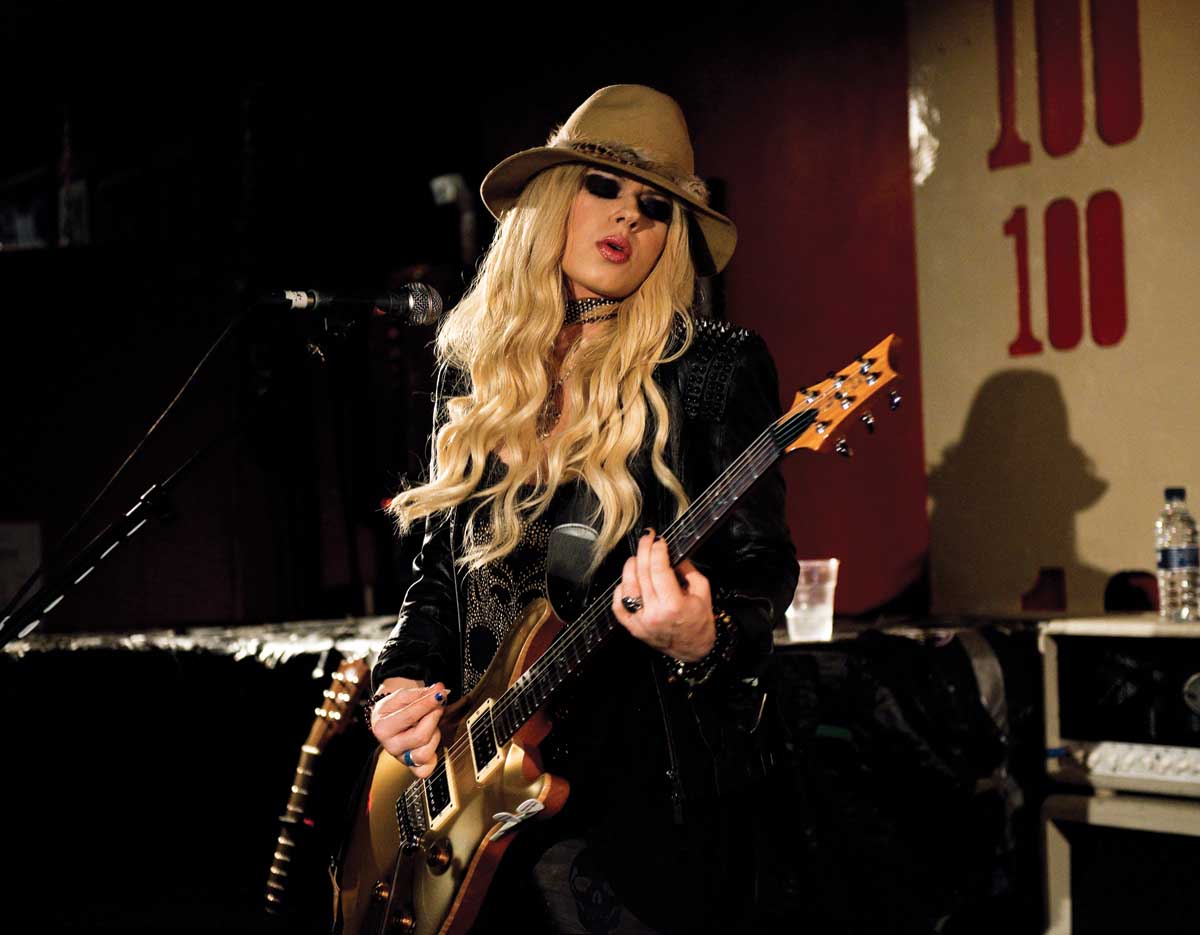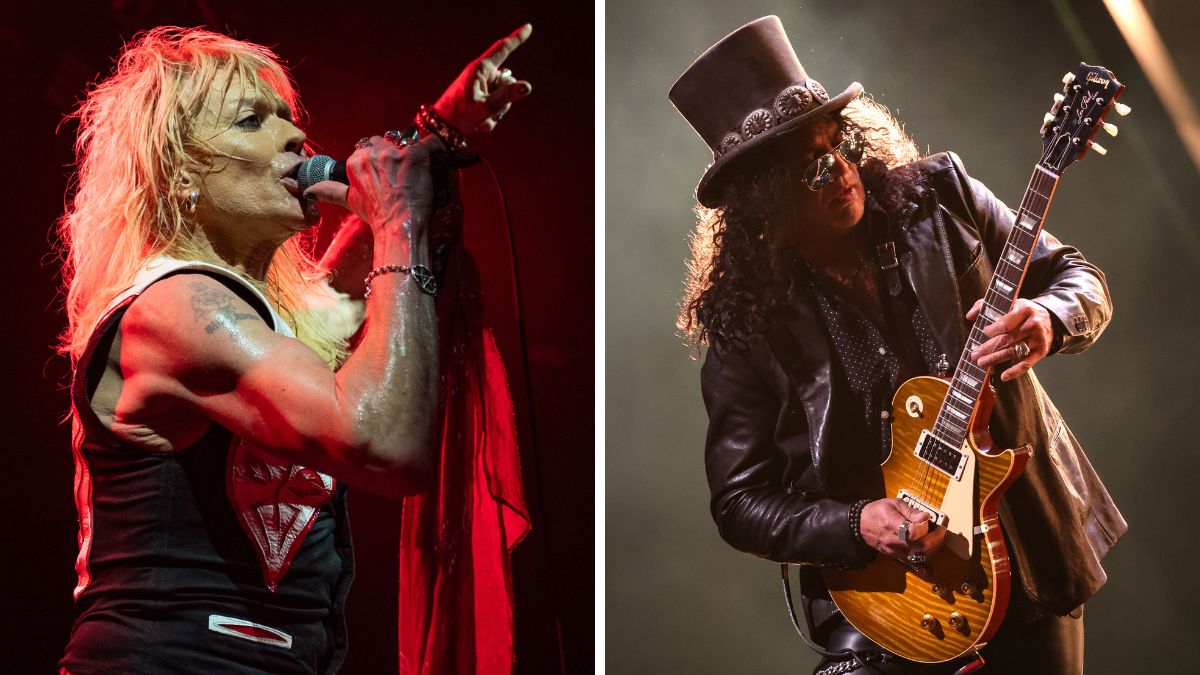35 PRS guitarists – including John Mayer, Alex Lifeson, Dave Navarro and Carlos Santana – on why they love Paul Reed Smith's guitars
As Paul Reed Smith celebrates its 35th anniversary, we speak to the players who put PRS on record and on the map
Zach Myers – Shinedown
• MODEL: PRS 305
• SONG: Bully – from Amaryllis (2012)
“I’ve recorded so many songs with my PRS guitars,” Myers says. “One guitar that I use in the studio and that I don’t use live is the 305. It’s one of my most versatile guitars. That guitar can get me through any sort of tone I need. When making the video for ‘I’ll Follow You’ I needed a guitar that could get wet for a rain scene in the video.
"PRS sent me a beautiful 25th Anniversary Hollowbody II that had a crack near the toggle switch, and I was told it didn’t work. It turned out that the guitar worked fine even after getting soaked in all the rain, and it’s now one of my number one go-to guitars live.”
Dave Navarro – Jane's Addiction
• MODEL: PRS Dave Navarro Signature
• SONG: Superhero – from Strays (2003)
“I was first introduced to PRS by Chris Haskett of Rollins Band in 1991,” Navarro reminisces.
“I had a nervous breakdown and threw all of my Ibanez guitars into the audience, so I didn’t have any guitars to play at my next show. I borrowed one of Chris’s PRS guitars and instantly fell in love with it. I went on stage having never played a PRS before and came off stage needing one immediately. I’ve played them ever since.
I went on stage having never played a PRS before and came off stage needing one immediately
Dave Navarro
“In 2006, PRS introduced my signature model which was a Jet White Custom 24 with gold hardware, and in 2012 they released an SE Navarro model. I’ve recorded many songs with my PRS signature models. You can hear my PRS [guitars] all over the Jane’s Addiction albums Strays and The Great Escape Artist.
Get The Pick Newsletter
All the latest guitar news, interviews, lessons, reviews, deals and more, direct to your inbox!
“I always felt guilty for having solid-color guitars because PRS has always been known for their beautiful transparent finishes that show off the gorgeous wood grain. But I just liked things simple back then. Now I’m really starting to love and appreciate the beautiful grain and finishes on the guitars, and I think I want one!”
Orianthi

• MODEL: PRS Custom 22
• SONG: How Do You Sleep? – from Heaven In This Hell (2013)
“One of my favorite guitars is ‘Manos,’ a Custom 22 that I used for the recording of ‘How Do You Sleep?’ on my Heaven in This Hell record,” Orianthi says.
“My other favorite PRS is my purple Custom 24 with Lotus inlays, which I used on my brand-new album. I absolutely love that one. I used my Santana model with Steve Winwood and Sheila E at the 2013 36th Annual Kennedy Center Honors gala honoring Carlos Santana.”
Vernon Reid – Living Colour
• MODEL: PRS S2 VR Vela
• SONG: Theme Song from W. Kamau Bell's United Shades Of America (2019)
“When Living Colour were on tour with Aerosmith in the summer of 2015, my prototype signature Vela was sent to me in Michigan,” recalls Reid. “Right out the box, the guitar was absolutely fantastic, with a ‘V’ neck profile that is perfect. I used it enthusiastically for the rest of that tour.
“More recently, I used my signature model S2 VR Vela when I recorded the current theme song of W. Kamau Bell’s CNN show United Shades of America. It’s a version of James Wheldon Johnson’s spiritual ‘Lift Every Voice and Sing.’”
Tony Rombola – Godsmack
• MODEL: PRS Custom 22
• SONG: When Legends Rise – from When Legends Rise (2018)
“The first PRS I played was Mark Tremonti’s,” Rombola recalls. “I had a side band called Another Animal, and we did a 10-week tour with Alter Bridge. Mark and I traded licks, and I had a great time jamming with him.
“I primarily use Custom 22 models. On Godsmack’s last release, I used my Custom 22 on the track When Legends Rise. My PRS guitars never let me down. Their top quality and killer tone and looks give me confidence night after night.”
Carlos Santana
• MODEL: PRS Custom 1980 "Santana Prototype" Model
• SONG: Blues For Salvador – from Blues For Salvador (1987)
“The first PRS I ever played was a Santana model, but it wasn’t called that yet,” Santana says. “It looked like candy – perfect color of cherry red and dark, rich wood. It looked so delicious, sounded great, stayed in tune and felt like my voice. This model later became the Santana I.
Picking up a Paul Reed Smith Guitar is like breathing to me. I don’t have to think about the guitar. It gives me clarity, certainty and confidence to play my heart
Carlos Santana
“I recorded the song Blues For Salvador with one of my custom PRS models. It was one of those solos that you play and you don’t remember – it just happens. Everyone was like, ‘Oh my God!’ as soon as I hit the last note and the tape ran out and started spinning around the tape machine. That moment will always stand out in my mind.
“Picking up a Paul Reed Smith Guitar is like breathing to me. I don’t have to think about the guitar. It gives me clarity, certainty and confidence to play my heart and not have to think about anything. When PRS first arrived, it changed the narrative. It was a whole other sound, and it was powerful. A PRS has and always will have impeccable integrity.”
Current page: Zach Myers to Carlos Santana
Prev Page Brent Mason to Mike Mushok Next Page Neal Schon to John WesleyChris is the co-author of Eruption - Conversations with Eddie Van Halen. He is a 40-year music industry veteran who started at Boardwalk Entertainment (Joan Jett, Night Ranger) and Roland US before becoming a guitar journalist in 1991. He has interviewed more than 600 artists, written more than 1,400 product reviews and contributed to Jeff Beck’s Beck 01: Hot Rods and Rock & Roll and Eric Clapton’s Six String Stories.
“I’m inspired”: John Mayer has been spotted playing a Neural DSP Quad Cortex live for the first time – could this be his new amp modeler of choice?
“I use a spark plug to play slide. It's a trick Lowell George showed me. It gets incredible sustain – metal on metal”: In the face of sexist skepticism, Fanny's June Millington carved a unique six-string path, and inspired countless players in the process





![A black-and-white action shot of Sergeant Thunderhoof perform live: [from left] Mark Sayer, Dan Flitcroft, Jim Camp and Josh Gallop](https://cdn.mos.cms.futurecdn.net/am3UhJbsxAE239XRRZ8zC8.jpg)








